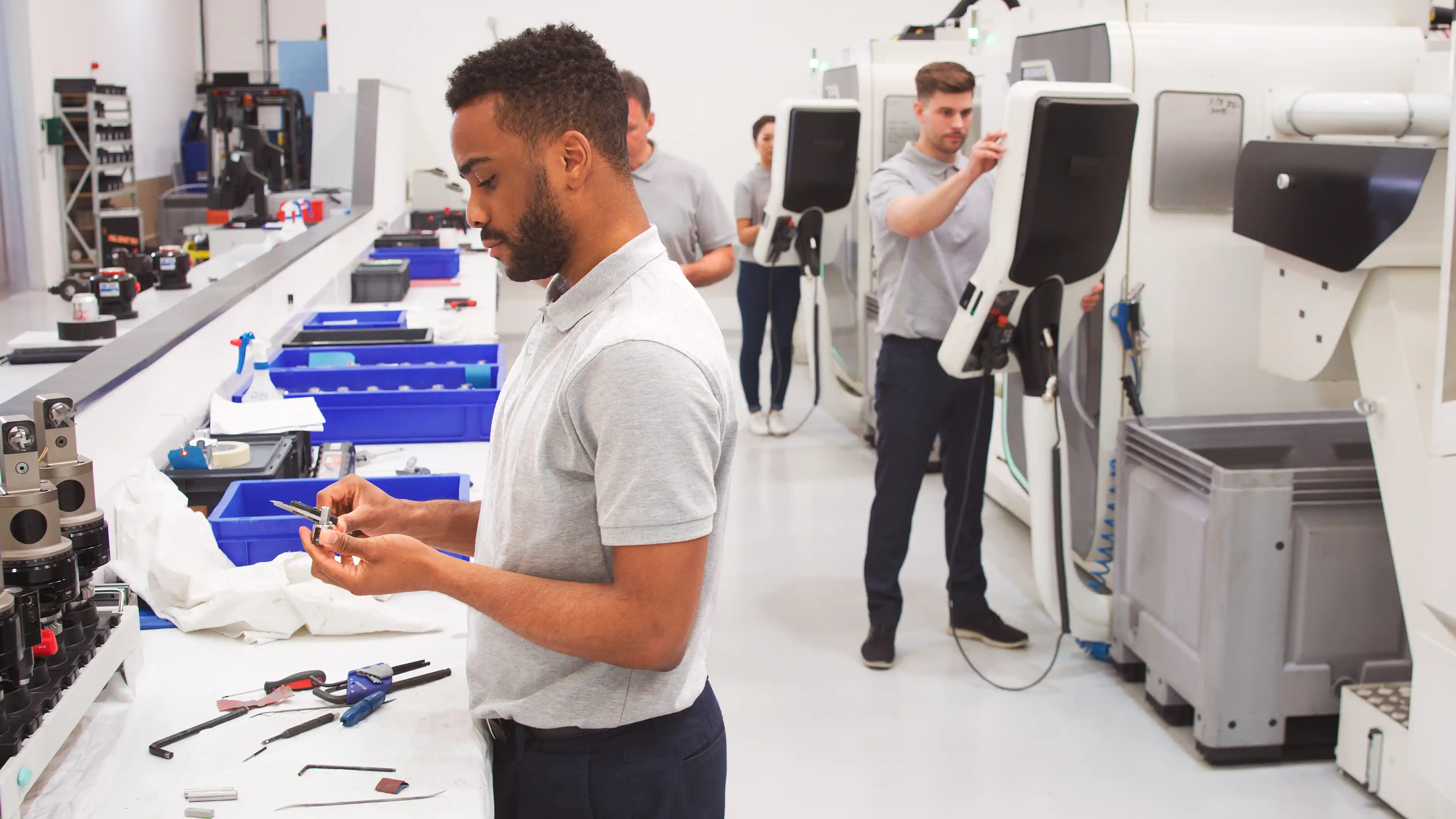
Planning a future-fit workforce: Enginuity investigates the challenges facing UK engineering and manufacturing employers
Date
25/04/2024
Category
Insights , News
UK engineering and manufacturing needs strategic workforce planning
Technological innovations such as AI and the Internet of Things, the adoption of environmentally conscious practices, and a shrinking number of workers over the last decade are causing considerable disruption to the UK engineering and manufacturing sector.
There’s evidence to suggest that responses to these changes should be employer-led, but engineering and manufacturing employers – and especially SMEs – need quality data to make informed decisions. That’s why we’ve embarked on a Knowledge Transfer Partnership (KTP) funded by Innovate UK and in collaboration with Teesside University, using our existing digital products and aggregate data from the Enginuity Skills Framework to develop a Strategic Workforce Planning Framework for the engineering and manufacturing sector.
As a first step, we have conducted primary research with engineering and manufacturing employers of all sizes to deepen our understanding of the challenges and requirements of Strategic Workforce Development Planning (SWDP).
Goals and challenges for large businesses and SMEs
As part of this initial research, we asked both large employers and SMEs about their main strategic goals for the coming years, and found that large businesses prioritise operational efficiency and production capacity, while SMEs are more focused on expanding into new markets and developing products and services. Both are concerned with efficiency and cost-cutting, with a future focus on innovation and market expansion.
In the long term, large businesses are especially focused on technological advancements and geographical expansion, while SMEs are focused on diversification and restructuring to boost responsiveness.
We also asked employers about the key workforce challenges they face. Both SMEs and large businesses cited attracting new talent and issues such as an ageing workforce and geographic disparity as among the biggest challenges. However, larger businesses had considerably more trouble retaining skilled employees, handling diversity and inclusion, and forecasting workforce requirements, while SMEs struggled more in upskilling existing employees.
Some of the specific challenges posed by upskilling and reskilling include rising costs, increased payment expectations, finding a suitable training provider, and attracting new talent, all of which are especially difficult for SMEs with limited time and resources.
The impact of technological innovation on engineering and manufacturing employers
SMEs are also especially vulnerable to external pressures such as the effects of Brexit, the global pandemic, and inflation, as well as policy changes including taxation, employment law and regulation, and immigration policy.
To get a clearer understanding of the technological challenges facing engineering and manufacturing employers, we asked which were most pressing for both the present and future workforce. The technological factors of particular concern were:
- Digitalisation
- Cybersecurity
- Automation
- Electrification
- Sustainability
- AI and machine learning
- VR and augmented reality.
Compared to SMEs, large businesses report a greater impact of all these technologies on their current workforce; however, when asked about the future workforce, SMEs are more concerned about digitalisation, electrification, and cyber security than their larger counterparts. Around half of all the respondents reported that they are already experiencing job role changes due to technology, with the skills in highest demand being related to digitalisation, automation, electrification, and sustainability.
As the digital transformation takes effect, large businesses in particular are experiencing greater demand for skills in frontline maintenance, project engineering, and sales, while SMEs are increasingly dependent on digital skills and advanced technology, with leadership and communication skills in demand for technical staff and managers.
Overall, we found that large businesses are more focused on adapting to technological change in the immediate future, whereas SMEs tend to view this as a long-term challenge.
Next steps
Given the widening skills gap brought on by changes in policy, technology, and the overall economic landscape, Strategic Workforce Development Planning is vital for engineering and manufacturing organisations of all sizes to remain competitive.
Bridging the gap between current and future workforce requirements will be central to a successful strategy, and this will be eased by having a better understanding of employer needs – especially among SMEs. That’s why, as the charity dedicated to finding new ways of closing skills gaps in UK engineering and manufacturing, our next priorities for this Knowledge Transfer Partnership will include working with stakeholders to develop an innovative SWDP framework that makes optimal use of Enginuity’s unique approach to occupation and skills data.
The more information the sector has concerning skills gaps, the better equipped we’ll be to close them. We encourage employers, policymakers, and other engineering and manufacturing stakeholders to download our initial report, and help us plan effectively for the sector’s future.
Download nowWe encourage employers, policymakers, and other engineering and manufacturing stakeholders to download our initial report, and help us plan effectively for the sector’s future.
Download nowMore news



